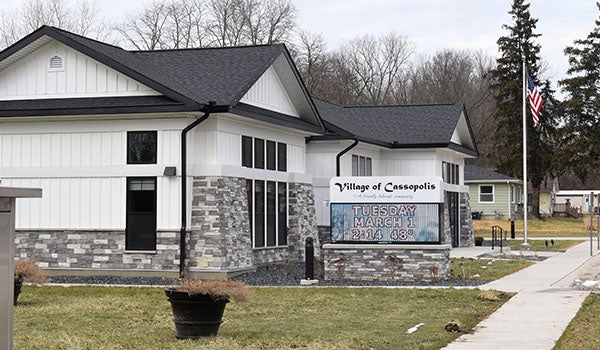Gun sales on record pace
Published 6:36 pm Thursday, May 30, 2013
Gun business is booming.
“The state of the firearms business, if you’ve been watching the news, sales for 2013 will be the single largest in the industry by probably close to 30 or 40 percent better than the best we’ve ever had,” Doug Reiff of Cassopolis told Dowagiac Rotary Club Thursday noon at Elks Lodge 889.
“It could be two to three times what it’s been,” he said, “but we can’t produce that much. The new methodology of production is make to order. You don’t have a warehouse you fill with inventory and let your sales staff go out and sell it. You sell an order, turn it in and two weeks later that order is shipped because it takes two weeks to manufacture.”
Reiff expects 2015 to show a big decrease in firearms business.
“I’ve been doing this my entire life,” he said. “My dad had a gun shop, so I grew up in it. I sold my first gun over the counter when I was 11 years old. As you can see, I don’t have three eyes and horns. The firearms business is not all evil. What happens is evil people use firearms. I wish I could stop that. It happens, like pressure cookers (being used at the Boston Marathon). Nobody intends a pressure cooker to be used as a bomb. Nobody intends some of these products to be used in the wrong way.”
Ammunition shelves remain barren because “people are hoarding ammo,” he said. “You watch the show ‘Doomsday Preppers’ (on National Geographic Channel), everybody has their own conspiracy theory. A lot of people subscribe to a lot of different things, so they have more ammo than they will ever use. That’s why I say in 2015 things will turn upside down. People only have so much spare money. When that’s gone business will return to normal.”
Reiff, an Indiana native who met his photographer wife in Chicago, spent 15 years in shooting sports retail, 17 years in distribution and sales and the past 12 years as a manufacturing representative.
He represents Lewis Machine and Tool, Weatherby, Black Powder and Leupold Optics.
“LMT makes AR-15s,” he said. “There are 65 manufacturers of AR-15s in the United States. It can build 2,000 rifles a month and we are currently selling 6,000, or three times our capacity.”
Retired superintendent Larry Crandall asked Reiff how his personal views align with National Rifle Association positions.
Though an NRA Benefactor member, Reiff said he does not agree with everything it says, but it is the organization that stands up for gun owners’ individual rights.
The NRA will not “give an inch because of fear of the federal government. An inch of what we say becomes a mile of what they do. Personally, I am for background checks at retail and gun shows, but then they wanted to throw in any gun transfer,” such as to an owner’s brother.
“Someday the press will learn that the more they talk about it, the more they sell for us,” Reiff said. “They’re our No. 1 salespeople. They perpetuate problems by glorifying it on the news. When they get a guy and it’s over and done, it should never be mentioned again. He shouldn’t become a household name.”
Reiff said, “We have background checks. We just don’t have them at gun shows. They want them at gun shows because of all the last bad things that happened, half of those guns came from gun shows. It’s not that gun shows sell to criminals, but a lot of people go to gun shows to get a bargain or to look at a lot of stuff.”
What does he do with an AR-15? Last October he hunted prairie dogs, firing about 800 rounds.
“Do I need it? No, but I don’t need a four-wheel-drive truck, either. We want one. Give me a bolt-action, single-shot rifle and a carton of ammo and put me 600 yards away and you’ll never get to me. This is a spray-and-shoot that made that guy do a more deadly job, but how are you going to get rid of all of them? If you stopped making them today,” profiteering would fill the void. “Cocaine, LSD and marijuana are all illegal,” but plentiful on the street. “Outlawing the AR-15 doesn’t cure the ill.”
Guns played a part in southwest Michigan history, from Niedner Rifle Co., which helped fuel Dowagiac’s economic engine during the 1920s, to the birth of forensic rifling science after the surprising discovery of St. Valentine’s Day Massacre tommy guns at a Berrien County home.
Reiff said besides custom rifles, Niedner designed “a very nice grip cap and butt plates. A company I worked for, Riley in Indiana, bought Niedner’s rights. I sold Niedner grip caps and butt plates for years before I knew where they were made. When Riley sold out 12 years ago and I left, we sold the Niedner products to Brownells in Iowa, so their grip caps and butt plates are still used by name on Cooper and Kimber rifles, but I don’t think anyone knows where they came from anymore.”






